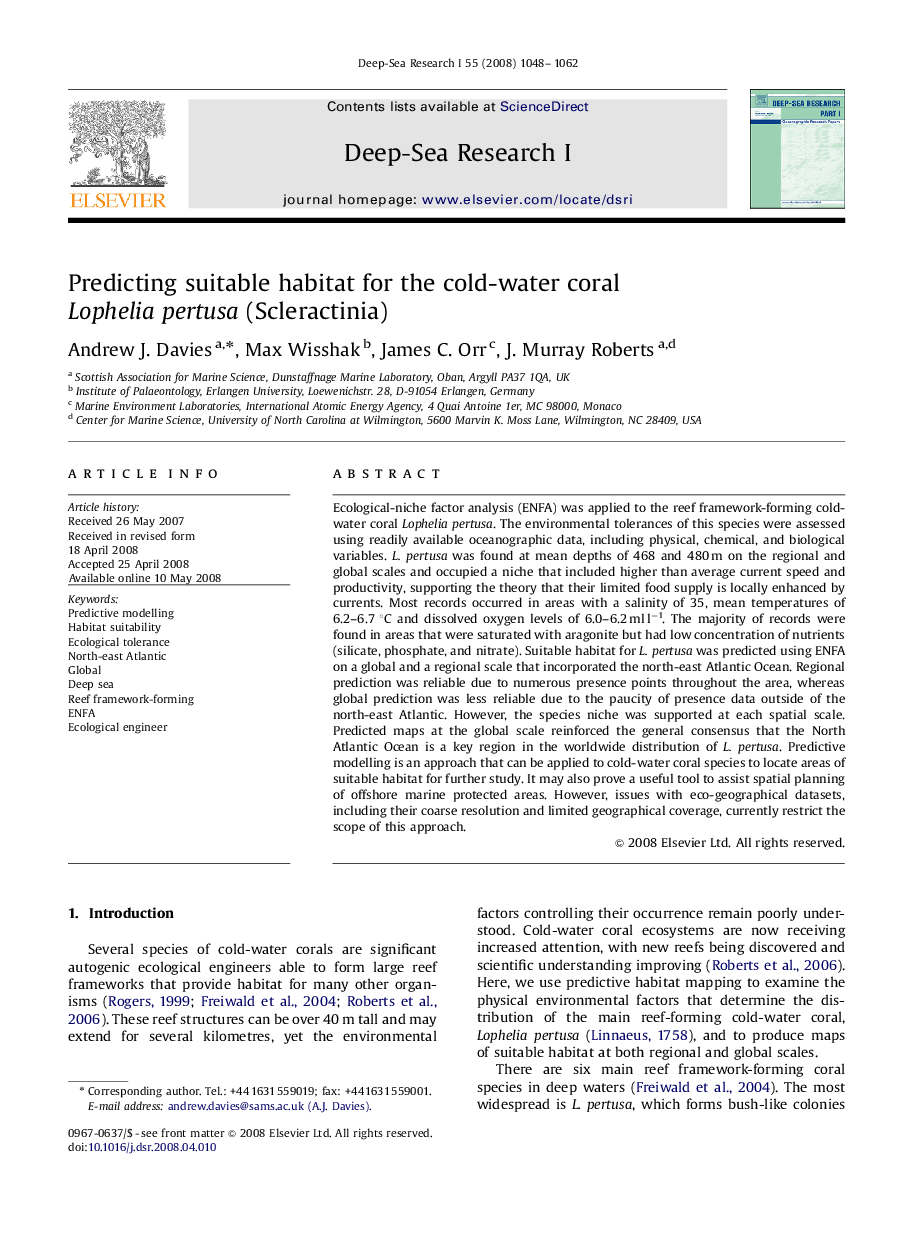| Article ID | Journal | Published Year | Pages | File Type |
|---|---|---|---|---|
| 4535168 | Deep Sea Research Part I: Oceanographic Research Papers | 2008 | 15 Pages |
Ecological-niche factor analysis (ENFA) was applied to the reef framework-forming cold-water coral Lophelia pertusa. The environmental tolerances of this species were assessed using readily available oceanographic data, including physical, chemical, and biological variables. L. pertusa was found at mean depths of 468 and 480 m on the regional and global scales and occupied a niche that included higher than average current speed and productivity, supporting the theory that their limited food supply is locally enhanced by currents. Most records occurred in areas with a salinity of 35, mean temperatures of 6.2–6.7 °C and dissolved oxygen levels of 6.0–6.2 ml l−1. The majority of records were found in areas that were saturated with aragonite but had low concentration of nutrients (silicate, phosphate, and nitrate). Suitable habitat for L. pertusa was predicted using ENFA on a global and a regional scale that incorporated the north-east Atlantic Ocean. Regional prediction was reliable due to numerous presence points throughout the area, whereas global prediction was less reliable due to the paucity of presence data outside of the north-east Atlantic. However, the species niche was supported at each spatial scale. Predicted maps at the global scale reinforced the general consensus that the North Atlantic Ocean is a key region in the worldwide distribution of L. pertusa. Predictive modelling is an approach that can be applied to cold-water coral species to locate areas of suitable habitat for further study. It may also prove a useful tool to assist spatial planning of offshore marine protected areas. However, issues with eco-geographical datasets, including their coarse resolution and limited geographical coverage, currently restrict the scope of this approach.
